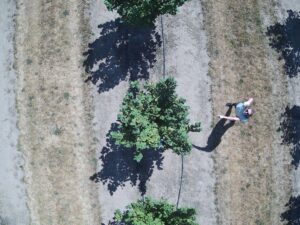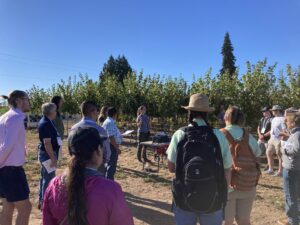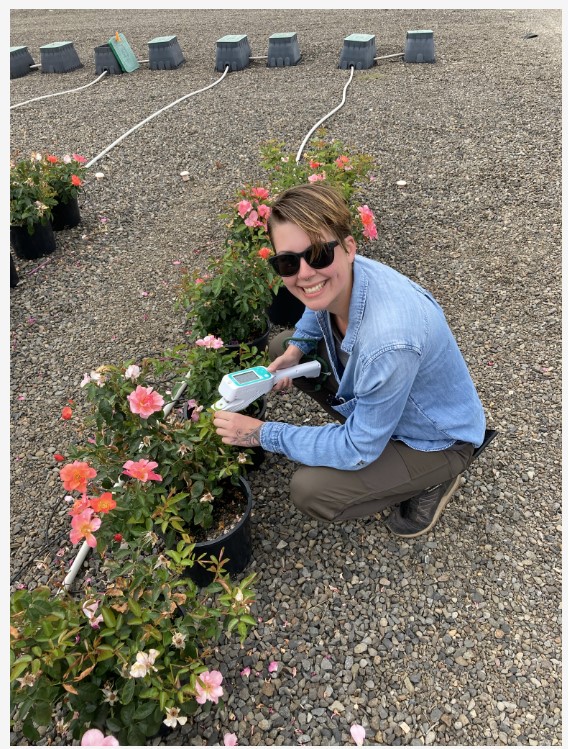The Gravel Pad update you’ve been waiting for, and more!
There’s so much going on in the season of plenty around NWREC! Enjoy this virtual tour of a few projects around the nursery.
Dalyn has been continuing her work with mini-lysimeters that control irrigation in shade trees – these tiny scales weigh the potted plants and use the change in weight as they dry to determine when to turn on the water. The lysimeters are gathering data on plant weight along with an on-site weather station to better understand the relationship between heat and irrigation in gravel pad production. Read more about this project here.
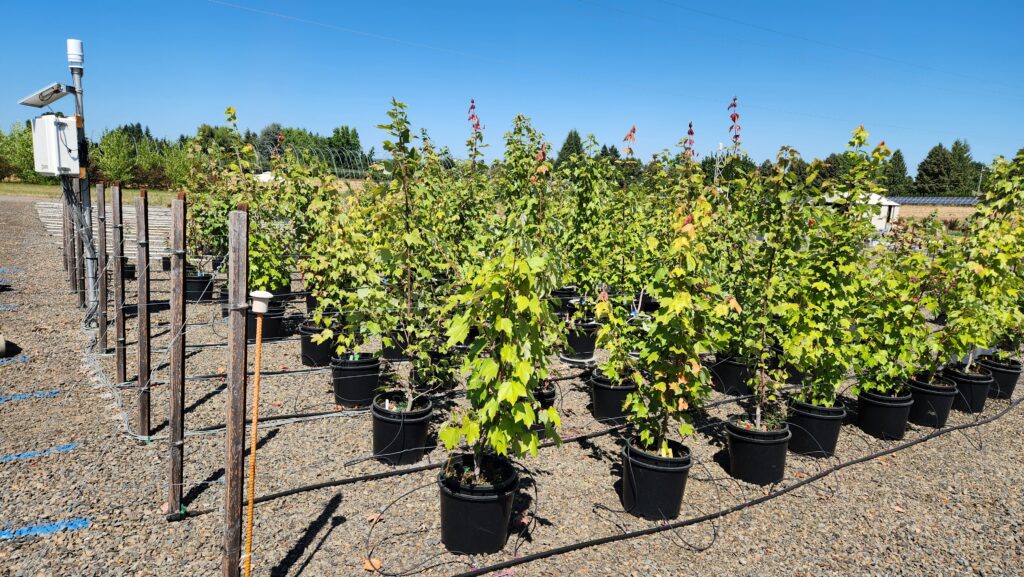
The Willamette Valley has had a few HOT summers in a row, even though lately this one has been pretty mild. Nevertheless, we haven’t given up on finding solutions for heat mitigation – including growing ornamentals under drought conditions to see which are the most “climate-ready” to meet changing needs. We’ll be asking the public to evaluate those plants in the upcoming Climate-Ready Field Day, come along and see how the plants are progressing (click the link above for more info).
In addition, we’re evaluating different means of mitigating the heat and the resultant high rates of evapotranspiration (basically ways to reduce plant sweat), from misting the young plants to covering tissues with kaolin, introducing fungicides that may be beneficial in managing water loss, using white pots instead of the traditional black, and even growth inhibitors – it’s been a pretty amazing feat to monitor the effects as you can see- check out this monitoring station!


A small project growing marigolds for festivals and holidays – like Dia de los Muertos – is also underway. Growing the marigolds has certainly brightened up the Nursery Zone at NWREC, and we’ve progressed into evaluating passive means to dry the flowers, saving energy and resources while preserving the gorgeous summer color.
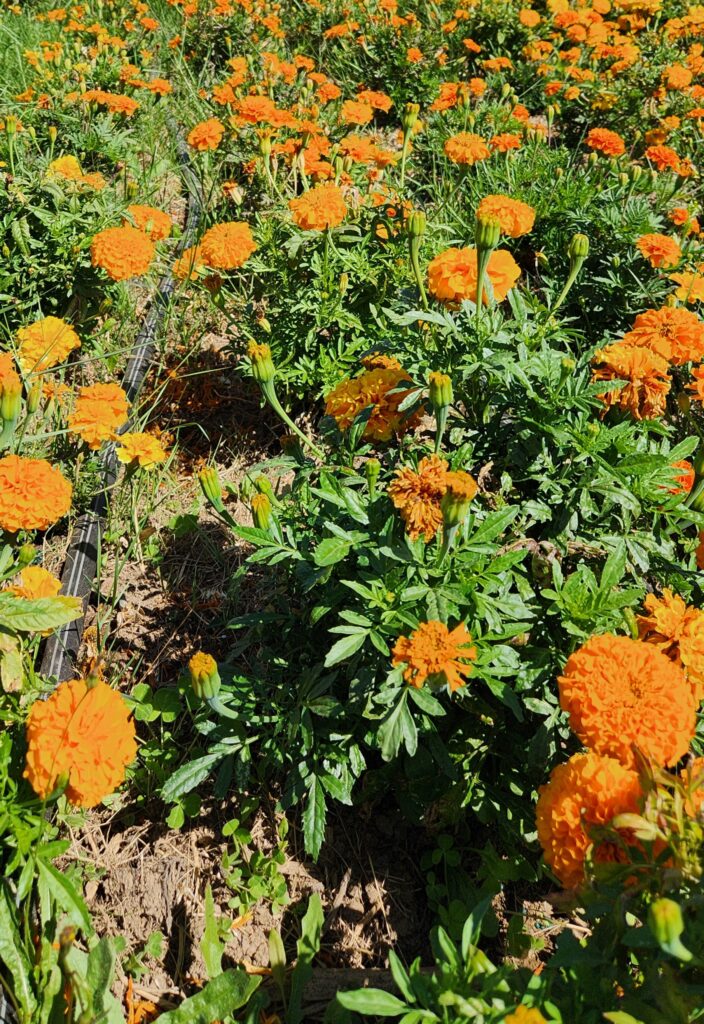

There’s even more in the works – stay tuned for information about fall workshops and PACE courses created specifically for nursery and greenhouse production for topics covering drone sprays, integrated pest management, and more.









